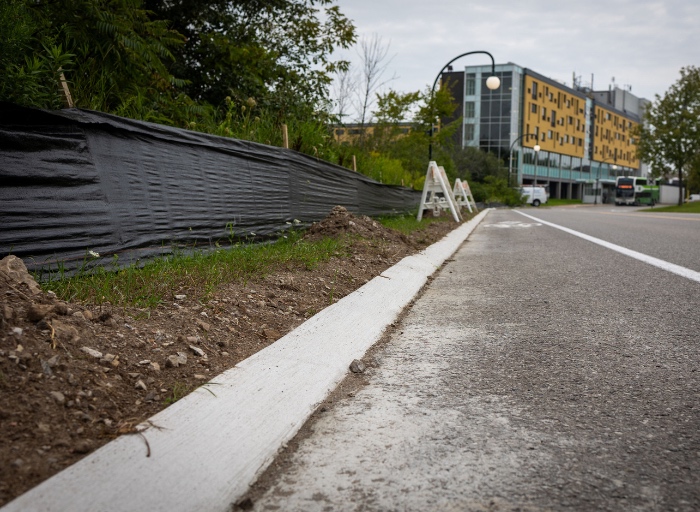Supporting Local Salamanders
Trent University is undertaking a unique construction project to support the migratory movements of local salamanders. A simple but innovative redesign of road curbs is set to transform how these amphibians move across campus, fostering biodiversity and ecological harmony.
A Home for Salamanders
Thanks to the extensive Trent Nature Areas, we are proud to host at least eleven species of frogs, toads, and salamanders. Among these are the Blue-spotted salamander and the Ambystoma, both reliant on crossing Gzowski Way to reach their breeding site in the Archaeology Complex Wetland Nature Area. Trent biology professor, Dr. Thomas Hossie, representatives from the Trent Herpetological Society, and the Society for Ecological Restoration identified that the 150-metre-long curb along this route unintentionally obstructs their journey.

A Salamander-Friendly Curb
To ensure the safe passage of salamanders, Trent replaced the existing curb with a salamander-friendly alternative. The new curb is sloped at a 45-degree angle, allowing the amphibians to easily climb it and continue on their migration path. We are grateful for the generous funding provided by an anonymous benefactor, making this project possible. This project aligns with Trent University's broader vision of maintaining biodiversity, as outlined in the Trent Lands and Nature Area Plan.

A Cost-Effective and Proven Solution
The decision to opt for a sloped curb design was informed by various factors. While other mitigation strategies like underpasses or overpasses have been considered, salamanders, like many animals, tend to avoid such structures, and implementing these alternatives could introduce complications in stormwater management. Trent took inspiration from the success of mountable curbs elsewhere, particularly in assisting snapping turtles in Ottawa.

